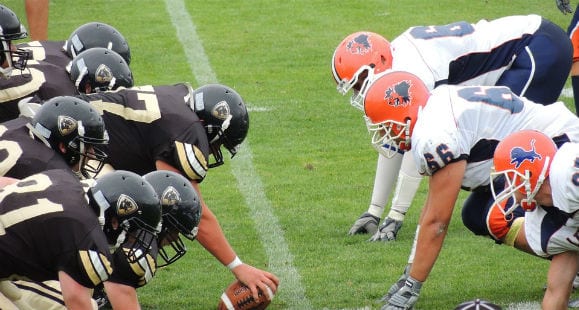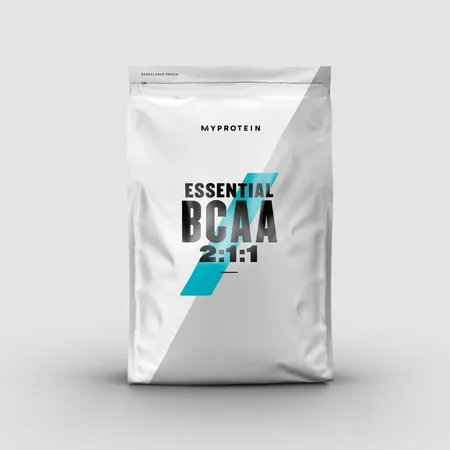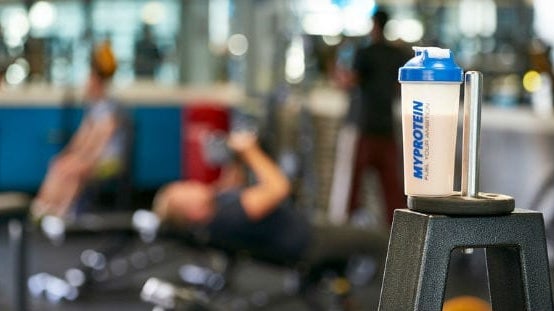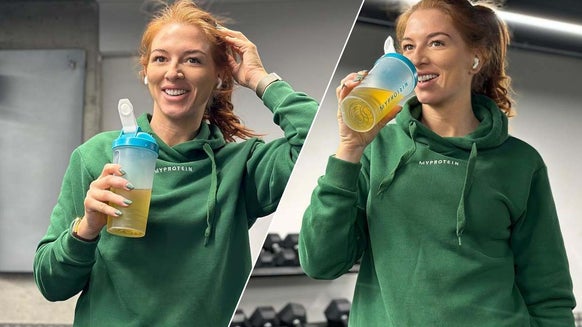Eat & Train Like A Defensive Tackle

If you've seen the Myprotein Infographic on 'How Big Is The Modern Day Football Player?' then you'll know just how 'big' the Defensive Tackle is.
Standing an average of 6 foot 5 inches and weighing 315 lbs the Defensive Tackle is arguably the most physically imposing player on the pitch. One things for sure, you would not want to be tackled by one!
To be the size they are, Defensive Tackles have to train hard and eat huge quantities of food to get enough calories to fuel their huge physique. Let's find out how a Defensive Tackle eats and trains.
Eat Like A Defensive Tackle
? Protein
The recommended daily amount of protein is 1 g per lb of bodyweight. So this means a Defensive Tackle weighing 315 lbs would need to consume 315 g of protein every day to maintain muscle mass.
This is the equivalent of:
? 1124 g of lean chicken
? 53 eggs
? 16 Impact Whey Protein shakes
? Carbohydrates
The recommended daily intake (RDI) of carbohydrates is 3.5 g per lb of bodyweight. For a Defensive Tackle this means they would have to consume a staggering 1102 g of carbohydrates everyday!
That's the equivalent of:
? 74 slices of white bread
? 44 medium sized potatoes
? 1800 g of beans
? Fats
The RDI for fat is 0.4 g per lb of bodyweight. This equates to 126 g of fat. In comparison the average American male, who weights 190 lbs, should be consuming 76 g of fat. As you can see a Defensive Tackle needs to be consuming far more fat on a daily basis.
This is the equivalent of:
? 17 Avocados
? 400 g of cheddar cheese
? 10 tablespoons of Extra Virgin Olive Oil
As you can see the amount of protein, carbohydrates and fat you have to eat is on a different planet! It certainly wouldn't be easy to eat like a Defensive Tackle on a daily basis.

Train Like A Defensive Tackle
The most important thing for a Defensive Tackle is to train for strength and power. This means lifting heavy weights in the gym for low reps. This way of training allows you to put on serious mass and size, which are essential for a Defensive Tackle charged with shutting down the opponents running game.
Both upper body and lower body strength are vitally important meaning that there's no skipping leg day!
A big difference between a football player and a bodybuilder, who may train in a similar way to put on mass, is that football players training involves a lot of cardio, meaning that they have to consume thousands of calories to maintain, and even gain mass to compete at the highest level.
A Defensive Tackle also has to be mobile, otherwise they'd be pretty useless at shutting down the opposition and getting into the right positions to affect play.
This involves working on your footwork, running and agility, as well as lifting weights in the gym.
Weight Training
If you want to pack on mass like a defensive back then you need to focus on your compound moves. This means bench press, squat and deadlift. These are all great exercises for building overall mass and packing on muscle.
If you train with these 3 exercises on a regular basis then it won't take long before you can start increasing the weight. You should look to increase the weight by 5-10% every session. Push yourself hard on every lift, especially as you're only doing minimal reps.
Footwork
Being able to move all that bodyweight around a football field requires some serious footwork, and this comes from performing drill after drill. Here are some drills you can try to really get your feet moving.
? Straight Run
Get yourself some cones and lay them out in a straight line 10 yards apart. You should look to use 8-10 cones, so you will be covering a total distance of 80 to 100 yards. The aim is on the first 10 yards is to jog whilst maintaining form and striking your feet upon the ground as many times as you can over the distance.
When you hit the next cone you need to sprint and then when you hit the next cone go back to a jog, focus on your form and get as many foot strikes upon the ground as possible. This drill will work on your ability to accelerate and decelerate.
? Lateral Run
From the breakdown position move from side-to-side through the cones. Use the same idea as the straight run working on form by jogging to the first cone, then sprinting to the next, then go back to jogging.
The main difference is you'll be passing the cones on different sides each time, creating an arching motion as you move through the cones. The main thing to focus on is when you come round the cone regain your balance and form.
? Backpedal
Backpedaling is an important skill to develop. The best way to do this is so start running backwards towards the first cone. Then when you hit the first cone turn into a front sprint, then turn back round so you're backpedaling towards the next cone.
This will help build ankle strength and the ability to rotate the body quickly, which is very important for any player, not just a Defensive Tackle.

Take Home Message
So here's an insight into what it is like to eat and train like a defensive tackle. We certainly wouldn't recommend you try eating as much food on a daily basis as a 315 lbs athlete, but if you want to gain weight and mass then the 'lift heavy' style of training will definitely work for you alongside the right nutritional plan.












